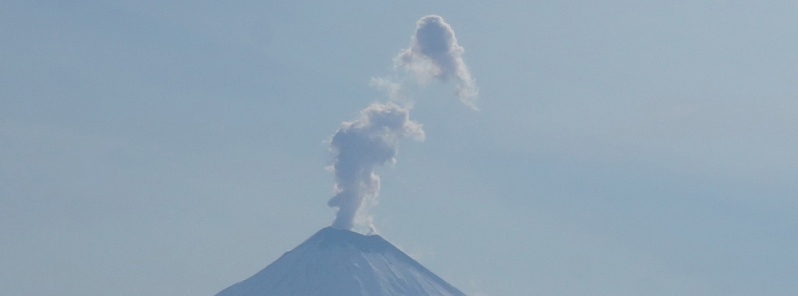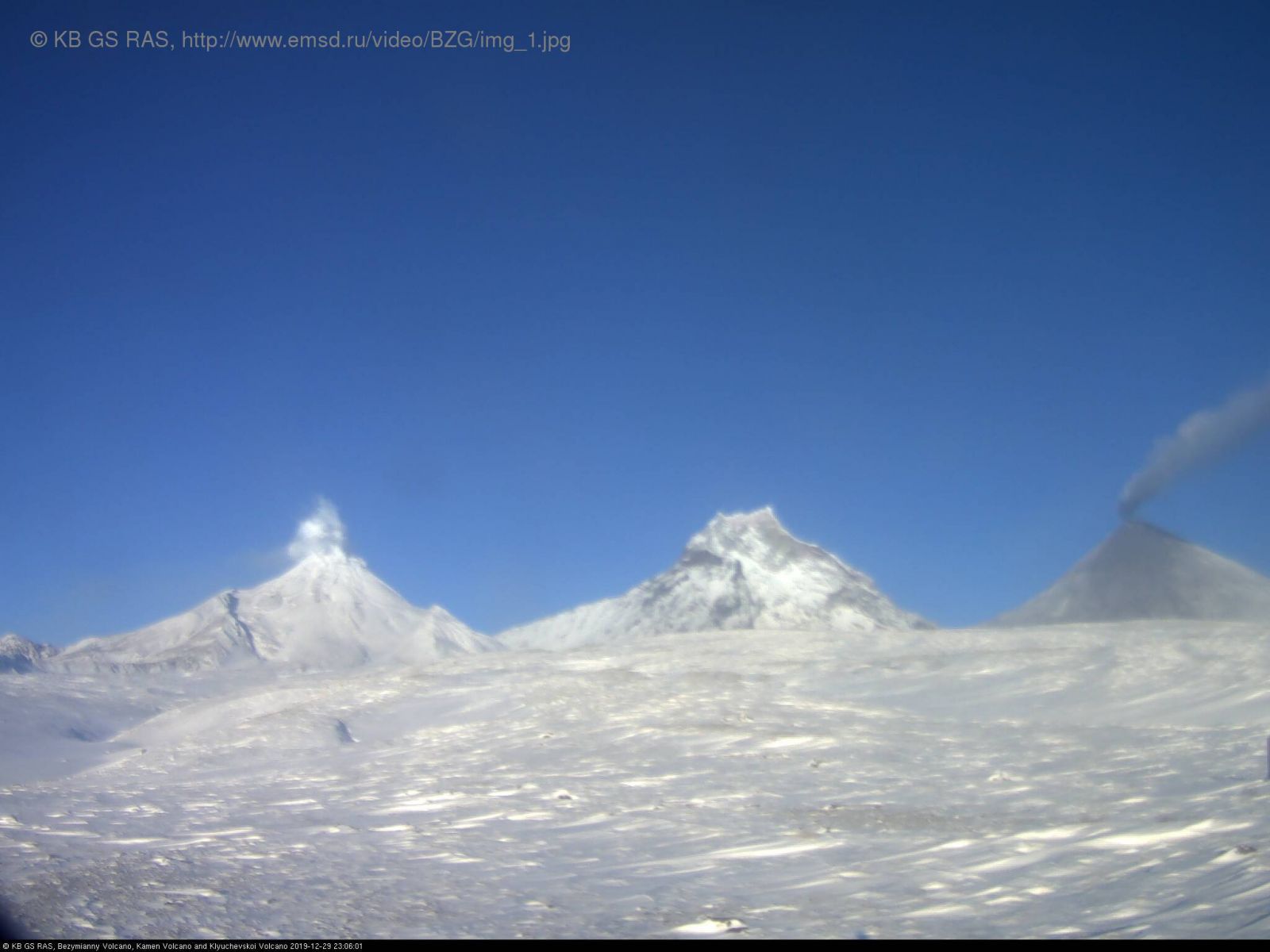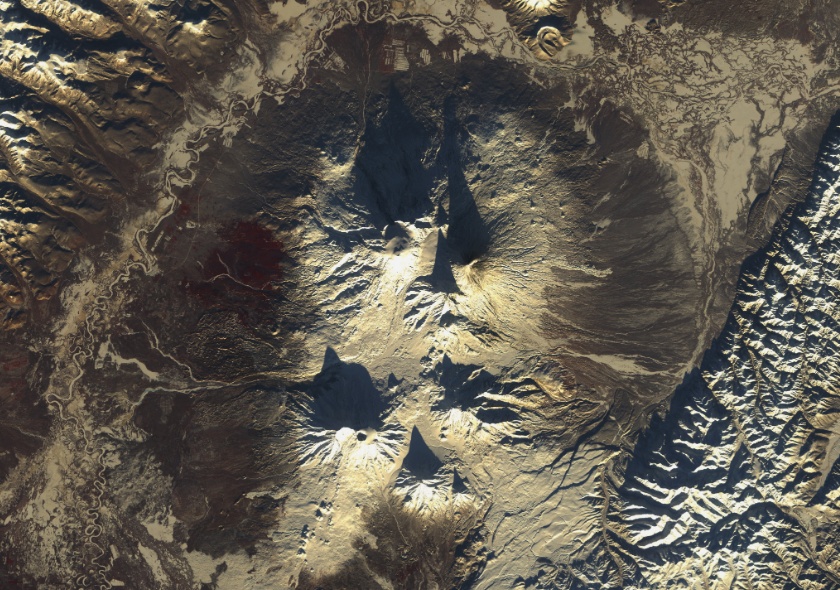Eruption at Klyuchevskoy, volcanic ash to 6 km (20 000 feet) a.s.l., Russia

A moderately strong eruption took place at Russian Klyuchevkoy volcano at 23:15 UTC on December 29, 2019. The Aviation Color Code remains at Orange. The volcano belongs to the Klyuchevskaya group of volcanoes, it is located 30 km (18 miles) from Klyuchi and 360 km (223 miles) from Petropavlovsk-Kamchatsky.
The eruption ejected volcanic ash up to 6 km (20 000 feet) above sea level, according to the Tokyo VAAC.
Ash plume is extending to the ESE and was at a distance of 130 km (81 miles) from the volcano at 02:00 UTC on December 30, KVERT said.
Ash explosions up to 7 km (23 000 feet) a.s.l. could occur at any time. Ongoing activity could affect low-flying aircraft.


Klyuchevskaya group by Copernicus EU/Sentinel-2 on December 24, 2019
A weak thermal anomaly was identified in satellite images from December 12 to 15 and 17. Strombolian activity was visible from December 13 to 15 and on December 17. Gas-and-steam plumes rose to 5 – 5.5 km (16 400 – 18 000 ft) a.s.l. and drifted 45 km (28 miles) NE on December 14 and 19.
The nearest community is the village of Klyuchi. Ash falls are frequently observed there during eruptions.
Geological summary
Klyuchevskoy (also spelled Kliuchevskoi) is Kamchatka's highest and most active volcano. Since its origin about 6 000 years ago, the beautifully symmetrical, 4 835-m-high (15 862 feet) basaltic stratovolcano has produced frequent moderate-volume explosive and effusive eruptions without major periods of inactivity. It rises above a saddle NE of sharp-peaked Kamen volcano and lies SE of the broad Ushkovsky massif.
More than 100 flank eruptions have occurred during the past roughly 3 000 years, with most lateral craters and cones occurring along radial fissures between the unconfined NE-to-SE flanks of the conical volcano between 500 m and 3 600 m (1 640 – 11 811 feet) elevation.
The morphology of the 700-m-wide (2 296 feet) summit crater has been frequently modified by historical eruptions, which have been recorded since the late-17th century. Historical eruptions have originated primarily from the summit crater, but have also included numerous major explosive and effusive eruptions from flank craters. (GVP)
Featured image: Klyuchevskoy on July 4, 2019. Credit: V. Davydova, M.V. Lomonosov MGU, IVS FEB RAS Geoportal

Commenting rules and guidelines
We value the thoughts and opinions of our readers and welcome healthy discussions on our website. In order to maintain a respectful and positive community, we ask that all commenters follow these rules:
We reserve the right to remove any comments that violate these rules. By commenting on our website, you agree to abide by these guidelines. Thank you for helping to create a positive and welcoming environment for all.